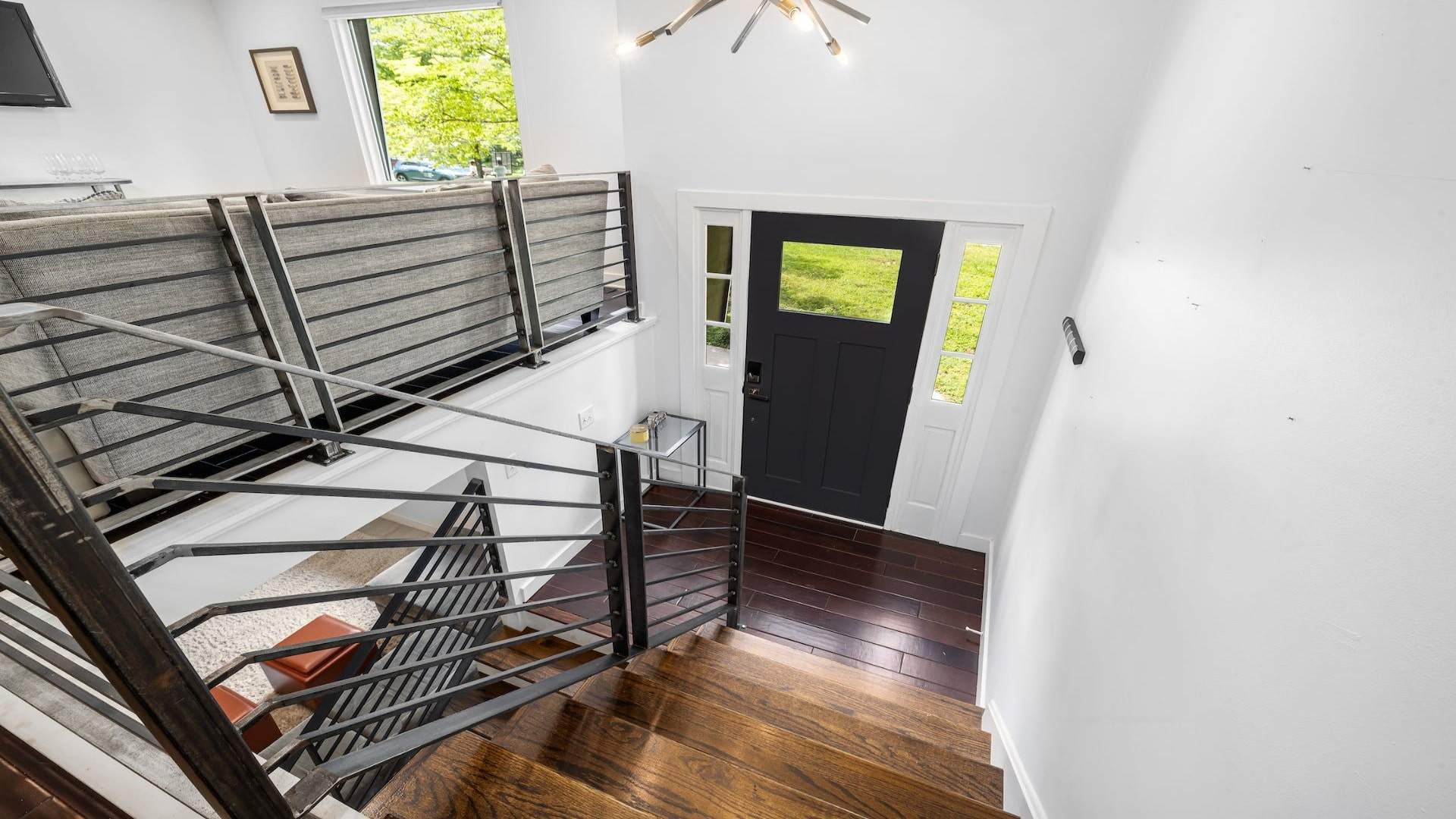
Windows play a crucial role in shaping the ambience of a room, influencing its atmosphere and enhancing its overall appeal. Strategic window placement isn't just about aesthetics; it's about making effective use of natural light and creating a sense of spaciousness within a room. In this article, we'll look at the art and science of window placement and explore how it can transform your living space and positively impact your well-being.
The importance of natural light
Natural light is a powerful design element that can significantly influence the mood and functionality of a room. Exposure to natural light has been linked to improved mood, increased productivity and overall wellbeing. By strategically placing windows, you can maximise the amount of natural light that enters your home, creating a brighter, more welcoming atmosphere.
Understand the orientation of your home
Before looking at window placement strategies, it’s important to understand the orientation of your home. The direction it faces – north, south, east or west – plays a crucial role in determining the amount and quality of sunlight each room receives throughout the day.
North-facing rooms tend to receive softer, more diffused light, making them ideal for rooms where a consistent, even glow is desired. South-facing rooms receive more direct sunlight, providing plenty of warmth and brightness. East-facing rooms are bathed in morning sunlight, while west-facing rooms enjoy the warmth of the afternoon sun.
Take advantage of morning light with east-facing windows
For rooms where a gentle, invigorating start to the day is desired, consider placing windows on the east side. Morning sunlight is cooler and less intense, creating a welcoming atmosphere. Bedrooms, kitchens and rooms where you start your day can benefit from well-placed east-facing windows.
To maximise the effect, choose window treatments that allow you to control the amount of light that enters the room. Sheer curtains or blinds can soften the morning sun while still maintaining a connection to the outdoors.
Capture afternoon warmth with west-facing windows
West-facing rooms experience warmer afternoon sunlight. While this can create a cosy atmosphere, it’s important to manage the potential heat gain. Consider using energy-efficient windows and shading solutions, such as blinds or curtains, to control the intensity of sunlight during peak hours.
Living rooms and rooms where people relax in the late afternoon or evening can benefit from west-facing windows. Position seating areas to take advantage of views and natural light, creating a harmonious balance between indoor and outdoor spaces.
Achieving uniform illumination with north-facing windows
North-facing rooms receive more consistent, diffused light throughout the day. These rooms may not receive direct sunlight, but they provide balanced lighting that minimises harsh shadows. This makes them ideal for home offices, studios or rooms where consistent lighting is important.
Choose larger windows to maximise the amount of natural light entering the room. In addition, using light-coloured and reflective surfaces in the room can help increase brightness and create a sense of airiness.
Soak up the sun with south-facing windows
South-facing rooms are flooded with direct sunlight, making them ideal for a variety of purposes. However, it’s important to balance the benefits of natural light with the potential for overheating. Choose windows with low emissivity (low-E) coatings to control heat gain and UV rays.
South-facing windows are ideal for living rooms, dining rooms and areas where you want to create a vibrant, sunlit environment. Consider incorporating skylights or tall windows to bring in additional sunlight without compromising privacy.
Create openness and connection to the outdoors
Strategic window placement can also enhance the connection between indoor and outdoor spaces, creating a seamless transition between the two. Large, floor-to-ceiling windows or sliding glass doors can visually expand a room, making it feel more spacious.
For areas with beautiful outdoor views, such as gardens or landscapes, consider placing windows to frame and showcase these views. This not only brings nature indoors but also adds a sense of tranquillity to the room.
Balancing privacy and natural light
While maximising natural light is an important goal, it’s important to balance it with the need for privacy. Consider the placement of neighbouring buildings, trees or any potential visual obstructions. Use a combination of window treatments such as blinds, shades or curtains to control the level of privacy without sacrificing the benefits of natural light.
Incorporate architectural features
In addition to orientation, architectural elements can also influence the effectiveness of window placement. Here are some considerations:
Vaulted ceilings and clerestory windows
Vaulted ceilings create a sense of openness and spaciousness. When combined with clerestory windows – windows placed high on the walls – they allow natural light to penetrate deeper into the room. This design element is particularly effective in rooms with high walls, such as living rooms or entrance halls.
Corner windows for panoramic views
Corner windows offer panoramic views and allow light to enter the room from multiple directions. This design choice is ideal for homes in scenic locations as it opens up breathtaking vistas and creates a sense of connection with the surroundings.
Window groupings for architectural interest
Experiment with different window groupings to add architectural interest to your home. Floor-to-ceiling windows, bay windows or even window walls can create a dynamic and visually appealing facade. This not only enhances the aesthetic value of your home but also maximises natural light from different angles.
Bottom line
Strategic window placement is a multi-faceted approach that involves understanding the orientation of your home, harnessing the benefits of natural light and incorporating architectural elements to create a harmonious living space. By carefully considering the direction of sunlight, the purpose of each room and the desired aesthetic, you can transform your home into a well-lit, spacious sanctuary that promotes both physical and mental well-being. Remember that the key is to strike a balance between maximising natural light and maintaining privacy, ultimately creating a space that feels open, inviting and in harmony with its surroundings.
